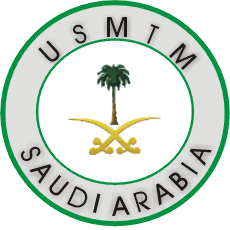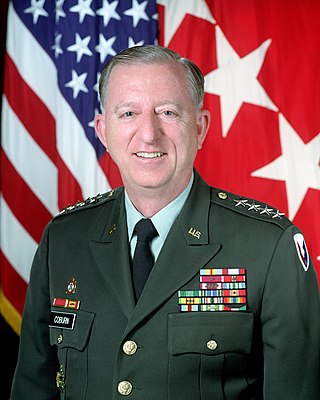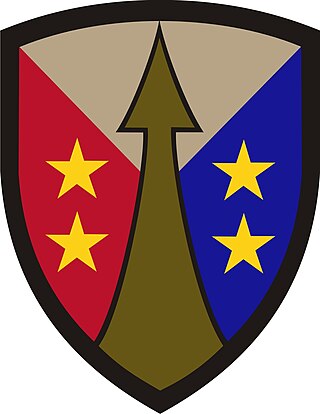The Combat Capabilities Development Command Soldier Center, formerly the United States Army Natick Soldier Research, Development and Engineering Center, is a military research complex and installation in Natick, Massachusetts, charged by the U.S. Department of Defense with the research and development of food, clothing, shelters, airdrop systems, and other servicemember support items for the U.S. military. It is a component unit of the United States Army Combat Capabilities Development Command and is a tenant unit of the United States Army Natick Soldier Systems Center (SSC). The installation includes facilities from all the military services, not just the Army, and is so configured to allow cross-service cooperation and collaboration both within the facility and with the many academic, industrial and governmental institutions in the Greater Boston Area.

The U.S. Army Medical Command (MEDCOM) is a direct reporting unit of the U.S. Army that formerly provided command and control of the Army's fixed-facility medical, dental, and veterinary treatment facilities, providing preventive care, medical research and development and training institutions. On 1 October 2019, operational and administrative control of all military medical facilities transitioned to the Defense Health Agency.

The Air Force Materiel Command (AFMC) is a Major Command (MAJCOM) of the United States Air Force (USAF). AFMC was created on July 1, 1992, through the amalgamation of the former Air Force Logistics Command (AFLC) and the former Air Force Systems Command (AFSC).

The Defense Logistics Agency (DLA) is a combat support agency in the United States Department of Defense (DoD). The agency is staffed by over 26,000 civilian and military personnel throughout the world. Located in 48 states and 28 countries, DLA provides supplies to the military services and supports their acquisition of weapons, fuel, repair parts, and other materials. The agency also disposes of excess or unusable equipment through various programs.

The U.S. Army Combined Arms Support Command (CASCOM) is a major subordinate command of the U.S. Army Training and Doctrine Command (TRADOC) and is located at Fort Gregg-Adams, Virginia. Subordinate to CASCOM is the Sustainment Center of Excellence (SCoE), which oversees and coordinates the five sustainment branches of the Army and the Army Sustainment University. The commander of CASCOM is dual-hatted as the head of SCoE. The CASCOM commander also serves as the commander of Fort Gregg-Adams.
The United States Army Logistics Management College (ALMC) is a forerunner of the Army Sustainment University (ASU) located at Fort Gregg-Adams, Virginia. ASU is a subordinate school of the United States Army Combined Arms Support Command.

The U.S. Army Materiel Command (AMC) is the primary provider of materiel to the United States Army. The Command's mission includes the management of installations, as well as maintenance and parts distribution. It was established on 8 May 1962 and was activated on 1 August of that year as a major field command of the U.S. Army. Lieutenant General Frank S. Besson, Jr., who directed the implementation of the Department of Army study that recommended creation of a "materiel development and logistics command", served as its first commander.

The United States Military Training Mission (USMTM) to the Kingdom of Saudi Arabia is a Security Assistance Organization (SAO) which manages and is primarily funded by Foreign Military Sales (FMS) cases between the United States Government and the Kingdom of Saudi Arabia. USMTM was the result of a meeting between King Abdul Aziz and United States President Franklin D. Roosevelt at Great Bitter Lake.

General John Gordon Coburn is the former CEO of VT Systems, Inc., a global company, which he joined in November 2001 and grew from 61 million dollars to 1.3 billion dollars. He relinquished this role in December 2018, and now serves as Non-Executive Chairman of the VT Systems Advisory Board. Prior to joining VT Systems, he served as the Commanding General, United States Army Materiel Command. He assumed the duties of Commanding General on May 14, 1999, and retired from the army in 2001. Prior to this assignment, he served as the Deputy Chief of Staff for Logistics, United States Army, Pentagon. He also served as the 26th Chief of Ordnance for the United States Army Ordnance Corps.
The Air Force Security Assistance and Cooperation (AFSAC) Directorate at Wright-Patterson Air Force Base, Ohio, develops and executes international agreements with friendly forces to provide defense materiel and services, in support of US national security. It has been a staff agency of the Air Force Life Cycle Management Center of the Air Force Materiel Command since 1 October 2012 when it replaced the Air Force Security Assistance Center. The office symbol of the Directorate is AFLCMC/WF.

The Military Surface Deployment and Distribution Command (SDDC) is the Army Service Component Command of the U.S. Transportation Command (USTRANSCOM) and is a major subordinate command to Army Materiel Command (AMC). This relationship links USTRANSCOM's Joint Deployment and Distribution Enterprise and AMC's Materiel Enterprise. The command also partners with the commercial transportation industry as the coordinating link between DOD surface transportation requirements and the capability industry provides.
United States Security Assistance Organizations (SAOs) are U.S. government military and civilian personnel stationed in foreign countries to manage security assistance and other military programs. SAOs are closest to these programs' operation and have the closest contact with host-country militaries.
The Office of the Program Manager, Saudi Arabian National Guard Modernization Program is a Security Assistance Organization of the United States Army with the primary mission of managing the modernization effort of the Saudi Arabian National Guard (SANG).

The Logistics Civil Augmentation Program (LOGCAP) is a program administered by the US Army to provide contingency support to augment the Army force structure. The first three contracts were awarded to a single bidder in each round of competition. The fourth and current contract, awarded in June 2007, was split between three companies with each company having the opportunity to compete for task orders.

The Naval Supply Systems Command (NAVSUP) serves as the supply command for the United States Navy for providing supplies, services, and support to both the Navy and the United States Marine Corps.

The United States Army Sustainment University is the Army's center of sustainment training for Department of Defense military and civilian personnel pursuing Professional Military Education (PME) and other associated training in military logistics and sustainment. The Army Sustainment University (ASU) has two campuses. The Somervell Campus at Fort Gregg-Adams, Virginia, delivers sustainment leader education for Quartermaster, Ordnance, and Transportation Soldiers and civilians. The Adams Campus at Fort Jackson, South Carolina, includes the Soldier Support Institute, which delivers Adjutant General and Financial Management leader education. ASU is a subordinate command to the United States Army Combined Arms Support Command, and is located at Fort Gregg-Adams, Virginia. The current President of Army Sustainment University is Ms. Sydney A. Smith, Senior Executive Service.
Foreign Military Sales (FMS) is a security assistance program of the of the United States government to facilitate the purchase of U.S. arms, defense equipment, design and construction services, and military training to foreign governments. FMS is a government-to-government program where the the United States Department of Defense through the Defense Security Cooperation Agency (DSCA) acquires defense articles on behalf of the foreign governments, protecting them from contract risks in negotiating with the arms industry and providing the contract benefits and protections that apply to U.S. military acquisitions. The FMS program was established through the 1976 Arms Export Control Act (AECA) and is overseen by the United States Department of State and the United States Congress through the annual Foreign Operations Appropriations Acts and National Defense Authorization Acts.

403d Army Field Support Brigade (AFSB), headquartered at Camp Henry, Daegu, Republic of Korea, delivers U.S. Army Materiel Enterprise to supported forces throughout the Korean and Japanese Theaters of Operations.

The Army Reserve Sustainment Command (ARSC) is a subordinate command of the 377th Theater Sustainment Command. The Army Reserve Sustainment Command is located in Birmingham, Alabama. The command comprises five subordinate commands and has command and control of Army Reserve Soldiers throughout the United States. The United States Army Reserve Sustainment Command provides trained and ready Soldiers on a continuous and global basis to U.S. Army Materiel Command (AMC), the Assistant Secretary of the Army for Acquisition, Logistics and Technology, the Defense Contract Management Agency (DCMA) and the Logistics Civil Augmentation Program (LOGCAP) in order to sustain Unified Land Operations.

Robins Air Force Base is a major United States Air Force installation located in Houston County, Georgia, United States. The base is located just east of the city of Warner Robins, 18 mi (29 km) south-southeast of Macon and approximately 100 mi (160 km) south-southeast of Atlanta, Georgia. The base is named in honor of Brig Gen Augustine Warner Robins, the Air Force's "father of logistics". The base is the single largest industrial complex in Georgia, employing a workforce of over 25,584 civilian, contractor, and military members.
















